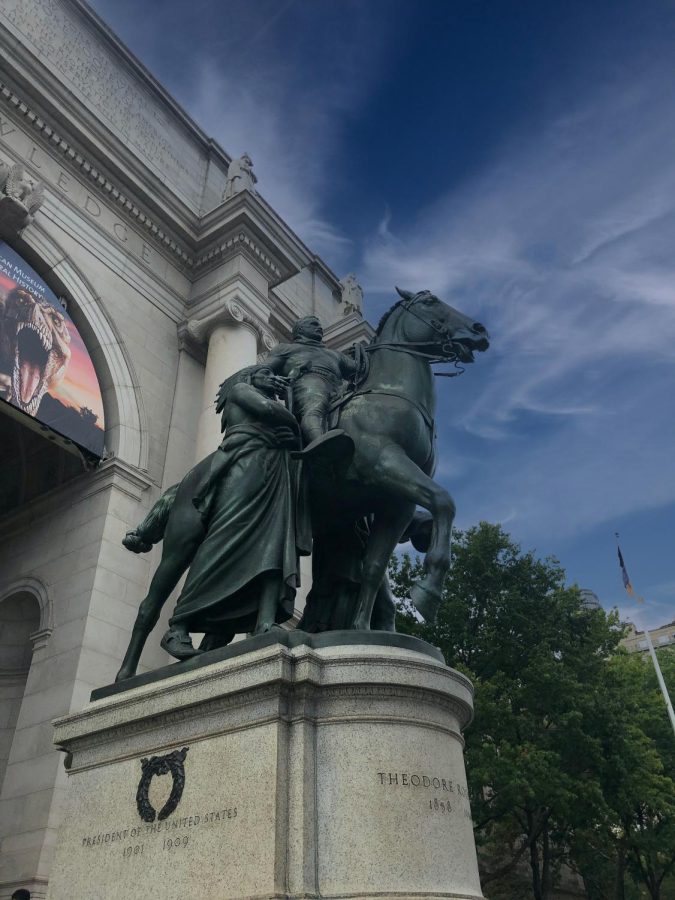Removal of Theodore Roosevelt Statue Raises Awareness of Prejudice Against Native Americans
February 18, 2022
The controversial statue of Theodore Roosevelt finally meets it’s end with it’s misrepresentation and fictitious accounts being brought to the light. The first thing guests should greet at the Museum of Natural History is a welcoming and grand gesture to equality for the past, present, and future, and this statue does all but that. Theodore Roosevelt is displayed upon a horse in a heroic stance flanked by a Native American and African American man. At first it brings an ere of inclusivity and equality but the pyramid of power is rather clear showcasing Theodore Roosevelt above the other therefore eluding that he is somewhat “superior”.
“The two figures at [Roosevelt’s] side are guides symbolizing the continents of Africa and America, and if you choose may stand for Roosevelt’s friendliness to all races,” states sculptor James Earl Fraser. Although the message is seemingly friendly, prior comments on Native Americans by Roosevelt are less so. “Take three hundred low families of New York and New Jersey, support them, for fifty years, in vicious idleness, and you will have some idea of what the Indians are. Reckless, revengeful, fiendishly cruel.” elaborates Roosevelt. Thus he is clearly prejudiced against Native American culture and shouldn’t be a symbol of equality and unity especially in a stance that praises him.
Roosevelt was additionally the center of national park preservation, which affected Native American life monumentally, “It was our land being taken from us we still have to pay a fee to go into parks, although it helped because it preserved sacred sites,” remarks Sadie Hampshire, former president of the Indigenous History and Culture Club. Over the history and establishment of national parks it is evident that Native Americans were displaced from their homes out of the cruelty of those establishing. “Native Americans were hunting and gathering here for at least 11,000 years. They were pushed out by the government after the park was established. The Army was brought in to keep them out, and the public was told that Native Americans were never here in the first place because they were afraid of the geysers,” states Dough MacDonald the author of Before Yellowstone.
The removal of this statue is a general step towards recognition of this mistreatment, but is it enough? “Native American culture is very mainstream and appropriated,” says Hampshire, “We don’t get much media press either.” The exploitation of Native American culture is all too apparent for those raised in the traditions, such as the capitalization of the football team named the “Redskins” which was altered in 2020 after much backlash.
Although changes are being enacted on a broader scale it is still possible to uplift and support the Native American community in small ways. “Even if you’re not native yourself, help them. Show more appreciation for more light-skinned natives and such,” exclaims Sadie, “We’re still here no matter what happens to us, we’re always gonna be here and we’re always gonna come back 10 times stronger. We deserve to be finally recognized.”


